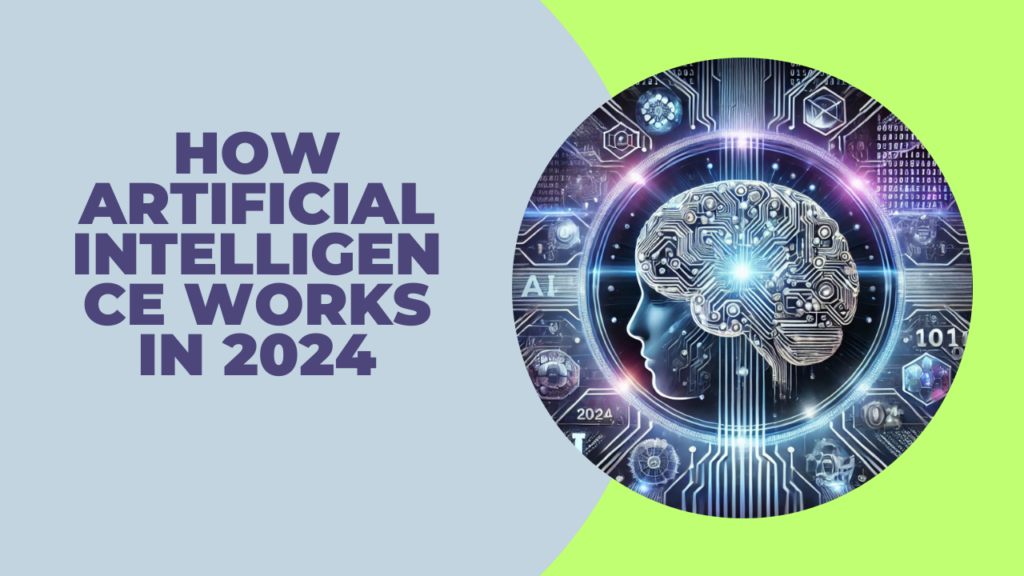How Technology Works in 2024: A Deep Dive into the Latest Innovations and How They Shape Our World
n 2024, technology has evolved to unprecedented levels, influencing nearly every aspect of daily life. From artificial intelligence to quantum computing, advancements are reshaping industries, economies, and personal lives. In this article, we explore how technology works in 2024, highlighting innovations across multiple domains. This comprehensive guide aims to be a go-to source for understanding today’s technology landscape, uncovering the underlying mechanisms, and visualizing its practical impact.

To gain a deep understanding and gather substantial information, it’s essential to understand the following key points. We’ll go over each one in detail:
- Introduction to Technology in 2024
- How Artificial Intelligence Works in 2024
- Understanding Quantum Computing and Its Impact
- Internet of Things (IoT) and Its Growing Importance
- Biotechnology: The Intersection of Tech and Health
- Blockchain Beyond Cryptocurrencies
- Conclusion: The Future of Technology
1. Introduction to Technology in 2024
Today, technology is more pervasive than ever, seamlessly integrated into both our personal and professional lives. Each device, system, and software application now operates with efficiency and intelligence that was once purely the realm of science fiction. Understanding how technology works in 2024 requires an exploration of not just individual gadgets but the larger ecosystems they inhabit.

Artificial Intelligence (AI) has advanced significantly, moving from simple pattern recognition to complex decision-making. In 2024, AI systems function autonomously, capable of self-learning through deep learning, machine learning, and neural networks. These systems work by gathering data, analyzing it, and making predictions based on patterns, all while constantly refining their algorithms for improved performance.
2. How Artificial Intelligence Works in 2024
Machine Learning and Deep Learning
The core of modern AI systems lies in machine learning (ML) and deep learning (DL). ML algorithms analyze vast amounts of data, learning to perform tasks without explicit programming. DL, a subset of ML, uses neural networks with multiple layers, mimicking human neural pathways to identify patterns.
Natural Language Processing (NLP)
In 2024, NLP has reached levels where AI can understand context, tone, and even subtle nuances in human speech. Chatbots and virtual assistants have become highly intuitive, capable of natural and engaging conversations.

3. Understanding Quantum Computing and Its Impact
Quantum computing has emerged as one of the most powerful technologies, addressing problems beyond the capabilities of classical computers. Unlike traditional computing, which relies on bits, quantum computers use quantum bits or “qubits” that can represent both 0 and 1 simultaneously, thanks to superposition.
How Quantum Computers Work
Quantum computers leverage two key principles: superposition and entanglement. In superposition, qubits exist in multiple states at once, allowing parallel computations. Entanglement, meanwhile, links qubits, so the state of one qubit affects another, even if they’re separated by large distances.
Real-World Applications
Quantum computing has transformed fields such as cryptography, drug discovery, and logistics. Its ability to solve complex calculations with unprecedented speed is especially valuable for industries that require vast computational power.
4. Internet of Things (IoT) and Its Growing Importance
The Internet of Things (IoT) has become the backbone of smart living, with billions of interconnected devices communicating in real time. IoT technology works by embedding sensors and software into physical devices, which then communicate over the internet. These devices include everything from home appliances to industrial machinery, creating a web of interlinked, data-sharing devices.
How IoT Devices Operate
IoT devices collect data from their environment via sensors. They then transmit this data to a central system or cloud, where it is processed and analyzed. For instance, smart home systems monitor and adjust lighting, temperature, and security based on user preferences.
Security and Privacy Challenges
As IoT grows, so do the challenges of data privacy and security. In 2024, advanced encryption and decentralized storage solutions are being used to mitigate these issues, ensuring secure communication between devices.
5. Biotechnology: The Intersection of Tech and Health
Biotechnology in 2024 is witnessing breakthroughs that directly impact human health and the environment. Genetic engineering, CRISPR technology, and bioinformatics are now commonplace, allowing for targeted medical treatments, sustainable agriculture, and enhanced biological research.
CRISPR and Genetic Engineering
CRISPR (Clustered Regularly Interspaced Short Palindromic Repeats) technology allows precise genetic modifications. In 2024, CRISPR is used to treat genetic disorders by altering DNA at the molecular level. Scientists are exploring treatments for diseases like sickle cell anemia and cystic fibrosis.
Personalized Medicine
Biotechnology has led to the rise of personalized medicine, tailoring treatments based on individual genetic profiles. This approach has proven especially beneficial in oncology, where customized therapies improve outcomes and reduce side effects.

6. Blockchain Beyond Cryptocurrencies
Initially popularized by cryptocurrencies like Bitcoin, blockchain technology in 2024 has evolved to offer solutions across various industries. A blockchain is a decentralized, immutable ledger that securely records transactions across multiple computers, ensuring transparency and security.
Blockchain’s Role in Industries
- Finance: Blockchain simplifies transactions, reducing the need for intermediaries and enhancing transparency.
- Supply Chain Management: Blockchain enables real-time tracking of goods, providing end-to-end visibility.
- Healthcare: By securely storing patient data, blockchain has become an essential tool for data integrity in healthcare.
How Blockchain Operates
Blockchain technology functions through a network of nodes that validate and record transactions in blocks. Each block contains data, a unique hash, and the hash of the previous block, creating an unbreakable chain.
7. Conclusion: The Future of Technology
Understanding how technology works in 2024 offers insight into the transformative impact of today’s innovations. These technological advances are creating a world with immense potential, enabling new solutions for complex challenges. By embracing and understanding these changes, we can prepare for a future where technology becomes an even greater part of our daily lives.
